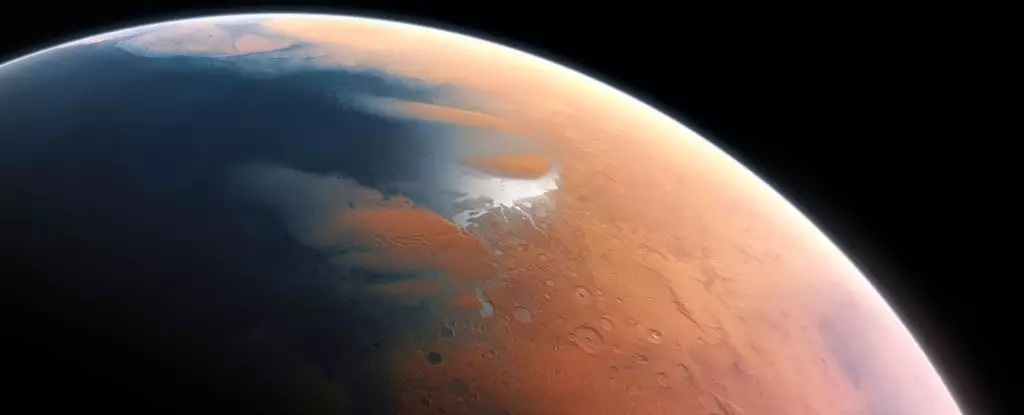Mars, the fourth planet from the Sun, is often characterized as a barren wasteland, its surface a tapestry of red dust and rocky plains. Yet recent scientific investigations have challenged this perception, presenting a version of Mars where immense bodies of water—oceans, lakes, and rivers—once thrived. A pivotal study has utilized ground-penetrating radar data from the Zhurong Mars rover, revealing structures beneath the surface that closely resemble beaches and river deltas, suggesting a rich history of liquid water. The implications of these findings not only reshape our understanding of Mars but also open up new avenues for pondering the planet’s climatic and biological past.
The study, undertaken by an international team of researchers, unveiled that Mars once hosted a substantial northern sea dubbed “Deuteronilus.” This claim is backed by geological formations that parallel the characteristics of ancient beaches found on Earth. Geologist Benjamin Cardenas of Pennsylvania State University remarks that these findings indicate a landscape that would have exhibited natural phenomena we associate with beach ecosystems—waves, tides, and even wind-driven sands. As researchers map the Martian bajo, the narrative of a constantly dry, lifeless planet begins to unravel.
In the quest to understand Mars’ hydrological history, the study utilizes advanced ground-penetrating radar technology. This innovative tool transmits radio waves into Martian soil, which bounce back and reveal the composition and structure of the subsurface layers. This method unearthed evidence of thick sedimentary deposits, structured in a way that evoked ancient shorelines from our blue planet. Such findings illuminate the shore-like features lying beneath Mars’ surface, inviting comparisons to deposits on Earth formed over eons.
The presence of water plays a critical role in shaping the surface and climate of any planet. Roundtable discussions among scientists have pointed out that oceans are not merely bodies of water; they act as vital components that influence weather patterns, geological formations, and potential habitability. As noted by geophysicist Michael Manga, tracing the history of water on Mars aligns with the broader theme of planetary exploration. If Mars possessed a large sea, it likely fostered a dynamic environment conducive to life, mirroring Earth’s formative years.
Furthermore, the anticipation surrounding Mars’ water history lies in the quest to identify ancient life. Earth’s earliest organisms thrived in shallow coastal areas—an interface of land, water, and atmosphere. If similar environments existed on Mars, they could provide fertile ground for life, and pinpointing locations that exhibit shoreline characteristics becomes crucial for future exploration.
Despite mounting evidence supporting the existence of large bodies of water in Mars’ past, many questions remain unanswered. A pivotal concern revolves around the mystery of what happened to these oceans. While current research suggests that a considerable amount of Mars’ water may be stored in its interior, these theories require further exploration and validation. The dynamics of Mars’ atmosphere, coupled with its susceptibility to extreme conditions, raise intriguing questions about how such a vibrant water cycle could dissipate over billions of years.
As researchers develop models to simulate ancient tides and currents on Mars, the complexities of the planet’s water history reveal a landscape previously considered lifeless. This calls into question the resilience and adaptability of life itself, reinforcing theories that life may arise under varied conditions, even in environments once thought hostile.
Excitingly, these revelations not only bolster the argument for potential past habitable conditions on Mars but suggest a strategic direction for future missions. Identifying coastal environments—where water and land intermingle—could guide scientists to promising new regions in their search for signs of ancient life. Satellite imagery and ground-based studies can synergistically enhance our understanding of these elusive features, balancing the necessary diligence with imagination to visualize a world once bursting with vitality.
The present findings could mark an essential evolutionary step in unraveling the history of Mars. By combining innovative technology with interdisciplinary research, scientists stand at the brink of discovering the secrets behind the planet’s ancient oceans. As exploration continues, Mars transforms from a mere dusty red rock into a fascinating puzzle with a narrative waiting to be told—one that links the destiny of our two planets through the common thread of water.

